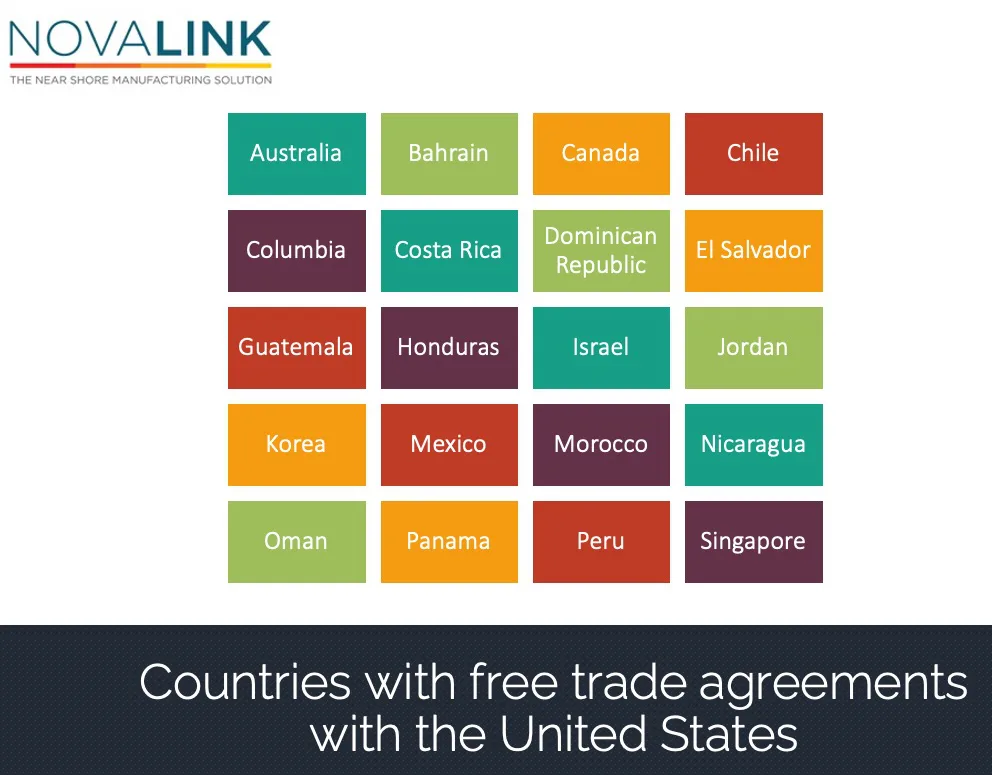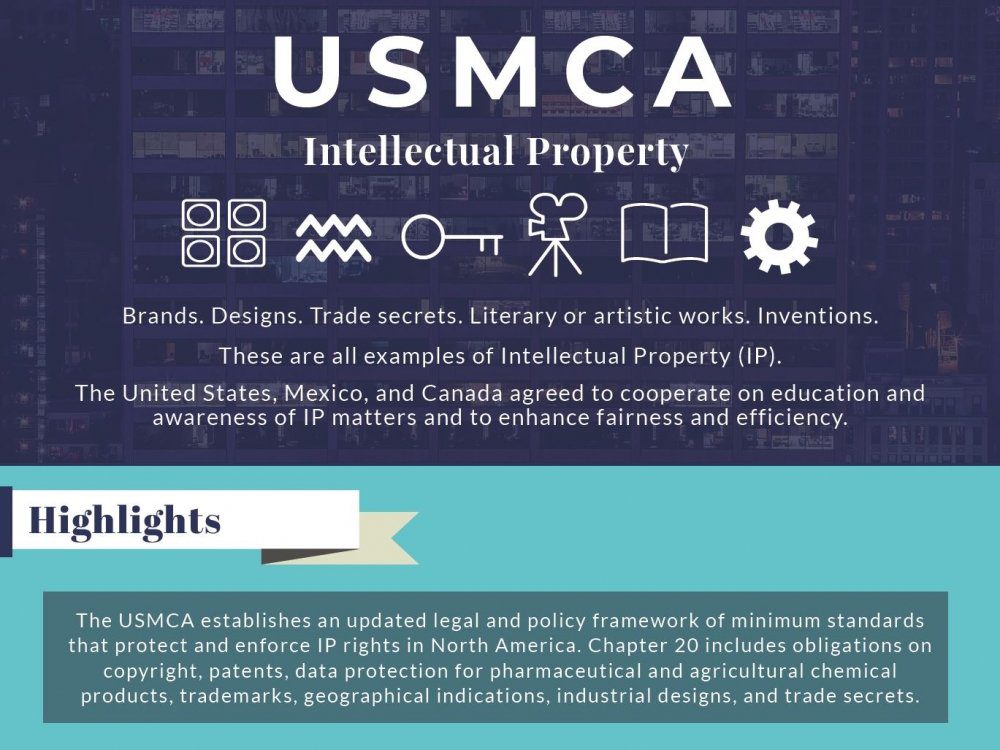Last Updated on June 11, 2025

You’ve probably seen the headlines by now: The U.S. just slapped a 55% tariff on a wide range of Chinese-manufactured goods. That’s not a typo. Fifty-five percent. If you're a company still sourcing from China, this isn't just a squeeze—it’s a full-blown gut punch. And it’s not happening in a vacuum. It’s happening while Mexico quietly gains ground under the protection of trade deals like USMCA. So, what’s really going on here? When it comes to when it comes to trade agreements on manufacturing in Mexico and China discover why these trade agreements are tilting the playing field and why this matters more than ever.
Overview of Trade Agreements
Trade agreements serve as the framework for international trade, promoting economic cooperation and reducing barriers to commerce. These agreements establish rules, standards, and tariffs to govern trade relationships between countries. They can open up new market opportunities, streamline supply chains, and enhance the competitiveness of domestic industries.

Think of Trade Agreements Like Insurance
It’s not just about lower costs. It’s about risk reduction. Trade agreements are essentially contracts between countries that say: “We won’t mess with your business.” That’s the kind of assurance CEOs and supply chain directors crave when planning 3–5 years out.
And right now, Mexico offers the kind of policy protection that China simply can’t.

The Tariff Heard Around the Globe
This morning’s news confirmed it: the latest U.S. tariff package targets Chinese imports with a sweeping 55% rate. Electronics, machinery, consumer goods—you name it. For American companies depending on China-based production, this could mean profit margins collapse overnight.
Now, tariffs aren’t new. This trade war’s been simmering for years. But 55%? That’s a whole new chapter. It’s not a slap on the wrist; it’s a signal: “We’re done relying on you.”
And here’s the thing—tariffs aren’t just taxes. They’re business-model killers if you don’t pivot fast.
Meanwhile in Mexico: A Different Story
Mexico, by contrast, is sitting in the front row of global manufacturing opportunity. Why? Trade agreements.
The United States-Mexico-Canada Agreement (USMCA) ensures duty-free access for most goods crossing North American borders. No tariff shocks. No political whiplash. Just stable, predictable terms. And that predictability? It’s gold in a volatile global market.
But wait—there’s more.
Mexico has over 50 free trade agreements, spanning regions like the EU, Japan, and Latin America. It’s not just the U.S. market that’s within reach—it’s half the globe.
Impact of Trade Agreements
Mexico has experienced significant growth in its manufacturing sector, driven partly by trade agreements. The North American Free Trade Agreement (NAFTA) and its successor, the United States-Mexico-Canada Agreement (USMCA), have played a vital role in fostering trade relations with the United States and Canada. These agreements have encouraged foreign investment, boosted exports, and facilitated cross-border production networks.
Comparative Advantage
Mexico's manufacturing industry has benefited from its comparative advantage in various sectors. Proximity to the United States, skilled labor, competitive wages, and an increasingly educated workforce have attracted foreign companies seeking to establish production facilities. Additionally, Mexico's participation in trade agreements has allowed it to specialize in certain industries and leverage its strengths.
China’s Trade Web: Still Powerful, But Tied Up
Now, let’s be fair. China isn’t going anywhere. Its supply chain density, production scale, and experience still make it a formidable player.
But here’s the catch: China doesn’t have a formal trade agreement with the U.S.
None. Zip. Nada.
That means every product crossing from China to the U.S. is vulnerable to political volatility. Add to that China’s strained diplomatic relations, rising labor costs, and energy limitations—and the path forward looks more like a maze.
Impact of Trade Agreements
China's manufacturing industry has experienced unparalleled growth in recent decades, largely driven by its participation in global trade agreements. The country's accession to the World Trade Organization (WTO) in 2001 opened up new markets and facilitated the export-oriented manufacturing boom. Trade agreements, such as the China-ASEAN Free Trade Agreement and the Belt and Road Initiative, have further expanded China's reach and strengthened its manufacturing capabilities.
Comparative Advantage
China possesses several key factors that contribute to its comparative advantage in manufacturing. These include a vast labor force, economies of scale, efficient logistics infrastructure, and a supportive policy environment. Its specialization in certain industries, such as electronics, textiles, and automotive, has propelled China to become the world's leading manufacturer.
So Why Aren’t More Companies Jumping Ship?
Honestly? Some are afraid to change. Others are locked into long-term contracts. And many just haven’t done the math. Because when you factor in tariffs, shipping time, port congestion, IP risk, and rising costs—Mexico starts looking like the safer, faster, smarter move.
Let’s compare:
| Factor | China | Mexico |
|---|---|---|
| Tariff Rate | 55% (new) | 0% (USMCA) |
| Shipping Time | 25–40 days | 2–5 days |
| IP Protection | Moderate | Strong under USMCA |
| Labor Costs | Rising | Stable, competitive |
| Proximity | Far | Near—border advantage |
You don’t need a spreadsheet to see the winner here.
But Is Mexico Ready for the Volume?
Fair question. The truth is, Mexico’s been preparing for this moment. Major investments in infrastructure, logistics, and workforce training have paid off. Industrial parks along the U.S. border are booming, and cities like Monterrey, Querétaro, and Saltillo are becoming manufacturing hubs.
Still, there are hurdles—bureaucracy, security concerns, and logistics bottlenecks. But compared to unpredictable tariff hikes and long lead times from Asia? Those problems feel more solvable.
Conclusion: Manufacturing in Mexico Versus China Is Shaped by Trade Agreements
Trade agreements have played a pivotal role in shaping manufacturing in Mexico versus China. Mexico's proximity to the United States and its participation in trade agreements have fostered growth and specialization in various industries. China, on the other hand, has capitalized on its comparative advantage and trade agreements to become a manufacturing powerhouse. Both countries have experienced significant economic benefits through increased exports, foreign investment, and enhanced global competitiveness.
Trade agreements aren’t just political documents—they’re business lifelines. And when you stack up the advantages, manufacturing in Mexico under the umbrella of USMCA and other trade deals looks less like an alternative and more like a competitive necessity. Meanwhile, China’s exposure to tariffs and geopolitical tension is getting harder to ignore. The gap between the two? It's widening. And if you're not already making moves, you're risking more than just your bottom line.
FAQ's on Trade Agreements on Manufacturing in Mexico and China
1. What is the USMCA and how does it impact manufacturing? The USMCA (United States-Mexico-Canada Agreement) replaces NAFTA and guarantees tariff-free trade for most goods between the three countries, giving Mexico-based manufacturers a cost advantage over countries like China.
2. Why are Chinese goods being hit with a 55% tariff? The U.S. imposed these steep tariffs as part of ongoing trade tensions, aiming to reduce reliance on Chinese manufacturing and encourage reshoring or nearshoring to places like Mexico.
3. How has manufacturing in Mexico been impacted by trade agreements compared to China? While both countries have seen growth in their manufacturing sectors due to trade agreements, the impact has differed. Mexico has become a manufacturing hub for industries such as automotive, electronics, and aerospace, leveraging its proximity to the United States and preferential access to North American markets. China, on the other hand, has transformed into the "world's factory," benefiting from low labor costs and massive export-oriented manufacturing.
4. Have there been any downsides to the impact of these trade agreements on manufacturing in Mexico and China? Yes, there have been some downsides. In Mexico, concerns have arisen about job displacement and wage suppression in certain industries due to competition from low-cost countries. In China, while manufacturing has boomed, environmental degradation, labor rights issues, and overdependence on exports have been raised as concerns.
5. How have trade tensions between the United States and China affected manufacturing in these countries? Trade tensions between the United States and China have led to fluctuations in manufacturing strategies. Some companies have sought to diversify their supply chains away from China to mitigate risks, benefiting countries like Mexico as an alternative manufacturing base. At the same time, both China and Mexico have explored ways to strengthen their own domestic manufacturing capabilities to reduce dependency on external markets.
About NovaLink
As a manufacturer in Mexico, NovaLink employs a unique approach that transcends the traditional model of shelter production. More than just the location of your manufacturing, we would like to become a partner in your manufacturing in Mexico. You will be able to relocate or initiate manufacturing for your company in Mexico in a low-cost labor environment with very little delay or up-front costs. Find out how we can help you by handling the manufacturing process.
There are NovaLink facilities in the border cities of Brownsville, Texas, Matamoros, Mexico, and Saltillo, Mexico.
Explore More: Discover Related Blog Posts
Expand your knowledge and delve deeper into manufacturing in Mexico vs. China with our curated collection of related blog posts.
- The Workforce in Mexico vs. China: Which is More Skilled and Cost-effective?
- Environmental Sustainability: Why Manufacturing in Mexico is More Responsible Than in China [2024]
- The Importance of Intellectual Property Protection in Mexico versus China [2024]
- The Pros and Cons of Outsourcing Manufacturing to Mexico vs. China [2025]
- How Mexico’s Proximity to the US Makes It a More Attractive Manufacturing Destination Than China
- 5 Reasons Why Mexico is a Better Choice for Manufacturing Than China
- Benefits of Manufacturing in Mexico vs. China: Which Country Offers More Value for Your Business?
- The Impact of Trade Agreements on Manufacturing in Mexico and China
- Closeness Counts: Why Sourcing For Manufacturing in Mexico Trumps China for Business Success [2024]